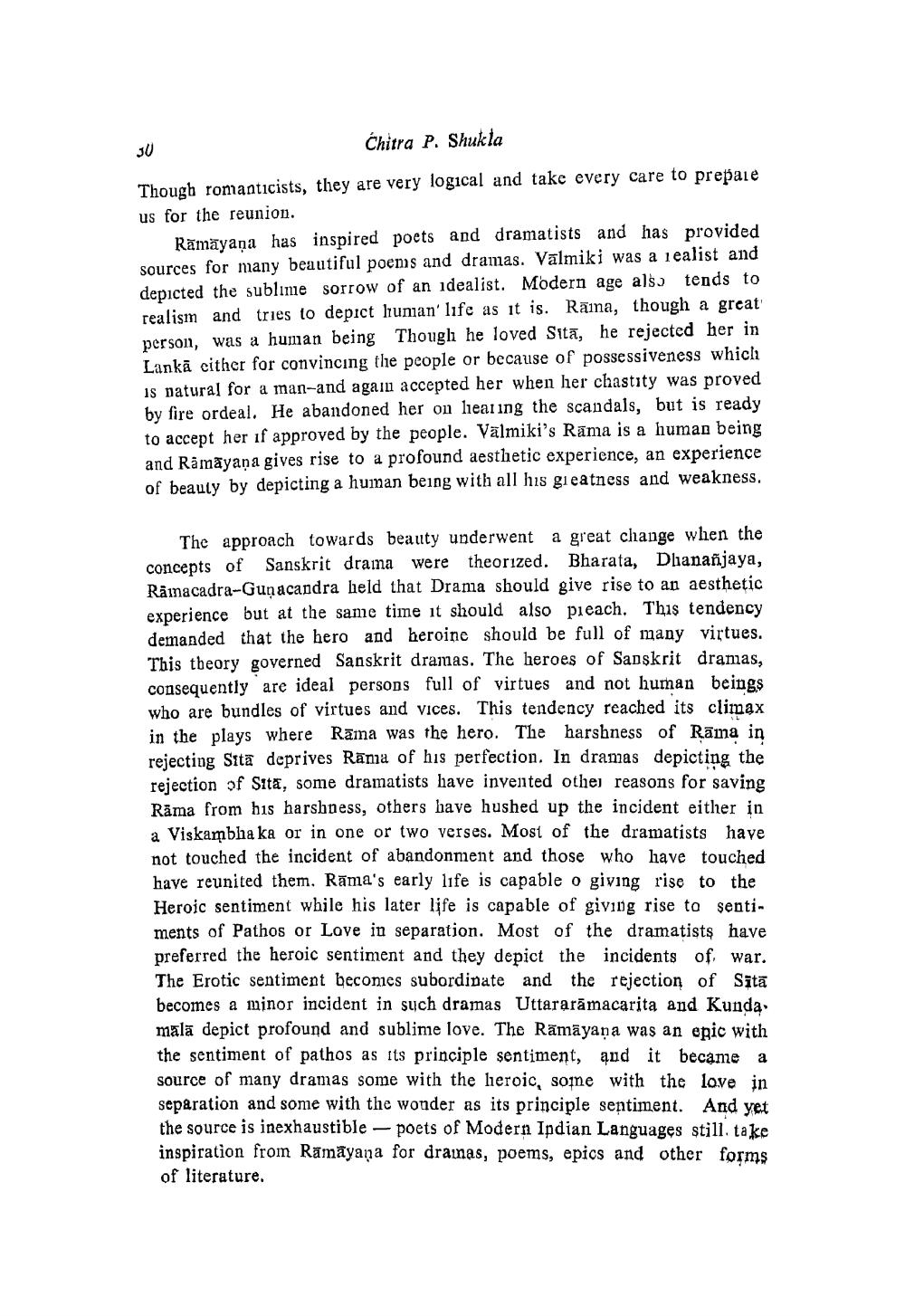________________
Chitra P. Shukla
Though romanticists, they are very logical and take every care to prepare us for the reunion.
Rāmāyaṇa has inspired poets and dramatists and has provided sources for many beautiful poems and dramas. Vālmiki was a realist and depicted the sublime sorrow of an idealist. Modern age also tends to realism and tries to depict hunian life as it is. Rāma, though a great person, was a human being Though he loved Sitā, he rejected her in Lankā cither for convincing the people or because of possessiveness which is natural for a man-and again accepted her when her chastity was proved by fire ordeal. He abandoned her ou liearing the scandals, but is ready to accept her if approved by the people. Välmiki's Rāma is a human being and Rāmāyaṇa gives rise to a profound aesthetic experience, an experience of beauty by depicting a human being with all his gieatness and weakness.
The approach towards beauty underwent a great change when the concepts of Sanskrit draina were theorized. Bharata, Dliananjaya, Rāinacadra-Guņacandra held that Drama should give rise to an aesthetic experience but at the same time it should also pieach. This tendency demanded that the hero and heroine should be full of many virtues. This theory governed Sanskrit dramas. The heroes of Sanskrit dranas, consequently are ideal persons full of virtues and not human beings who are bundles of virtues and vices. This tendency reached its climax in the plays where Rāma was the hero. The harshness of Rāma in reiecting Sita deprives Rania of his perfection. In dramas depicting the rejection of Sita, some dramatists have invented other reasons for saving Rāma from his harshness, others have hushed up the incident either in a Viskambha ka or in one or two verses. Most of the dramatists have not touched the incident of abandonment and those who have touched have reunited them. Rāma's early life is capable o giving rise to the Heroic sentiment while his later life is capable of giving rise to sentiments of Pathos or Love in separation. Most of the dramatists have preferred the heroic sentiment and they depict the incidents of war. The Erotic sentiment becomes subordinate and the rejection of Sita becomes a minor incident in such dramas Uttararāmacarita and Kunda malā depict profound and sublime love. The Rāmāyaṇa was an epic with the sentiment of pathos as its principle sentiment, and it became a source of many dramas some with the lieroic, some with the love in separation and some with the wonder as its principle sentiment. And yet the source is inexhaustible — poets of Modern Ipdian Languages still take inspiration from Rāmāyaṇa for drainas, poems, epics and other forms of literature.




